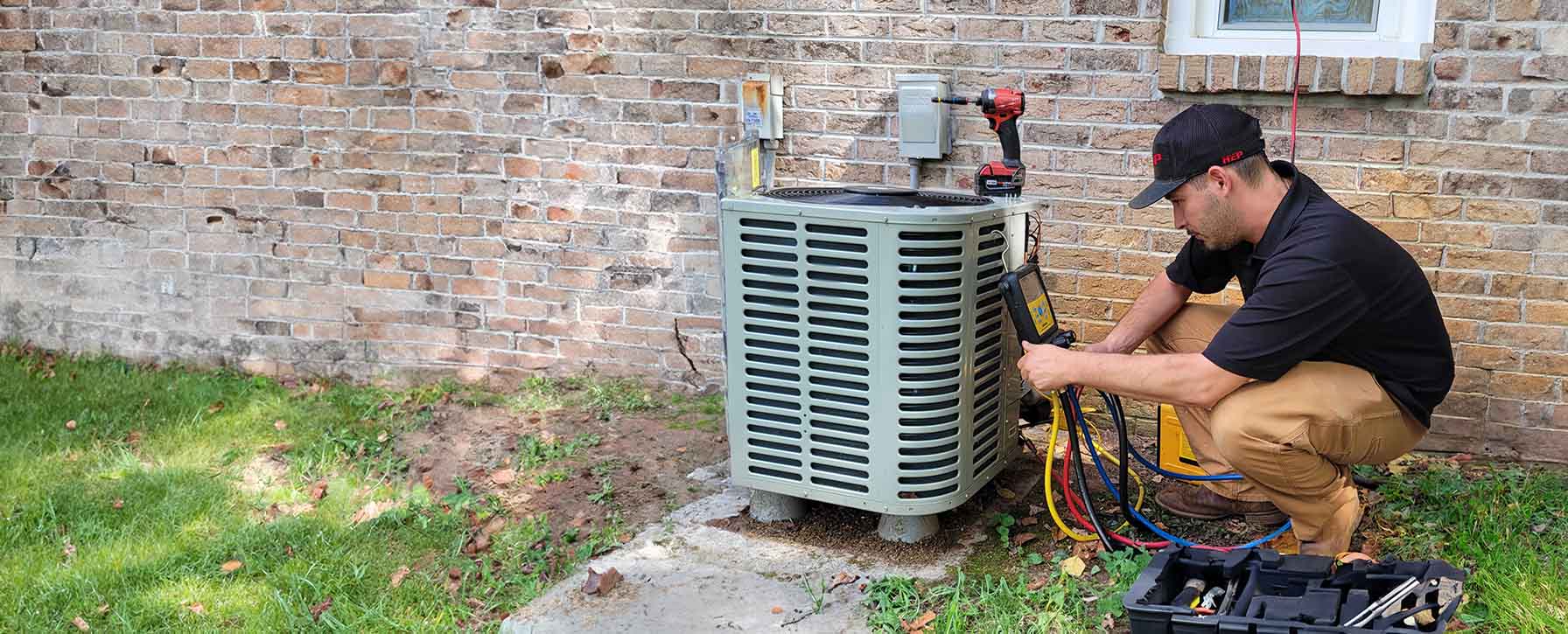

Energy Efficiency
Your trusted partner for professional home services. Quality workmanship, guaranteed satisfaction.




- HEP
- Energy Efficiency
Energy Efficiency | Ventilation and Air Quality | Heating and Air Conditioning | New Market
A comfortable home in New Market isn’t just about the right temperature—it’s about breathing clean, fresh air while keeping energy bills low. HEP’s certified technicians optimize your heating and cooling system for peak performance, sealing leaks, balancing airflow, and installing high-efficiency equipment that uses less power without sacrificing comfort. From smart thermostats to energy-saving heat pumps, we custom-tailor every solution to the unique layout of your home, helping you conserve resources and enjoy year-round savings.
Our commitment to ventilation and air quality means we go beyond temperature control. We evaluate ductwork, humidity levels, and filtration, then integrate advanced air purifiers and ERV/HRV systems that exchange stale indoor air for crisp, conditioned outdoor air—all while capturing allergens, odors, and airborne pollutants. The result is a healthier living space where every breath feels fresh and every utility bill feels lighter, backed by HEP’s local expertise and 100% satisfaction guarantee.
FAQs
How can an energy-efficient HVAC system lower my utility bills in New Market?
High-efficiency furnaces, heat pumps, and air conditioners use advanced compressors, variable-speed blower motors, and smarter controls that require less electricity or gas to deliver the same comfort. Because New Market experiences hot, humid summers and chilly winters, your equipment runs much of the year. A system with a Seasonal Energy Efficiency Ratio (SEER2) of 16–20 and an Annual Fuel Utilization Efficiency (AFUE) of 95% or higher can cut heating and cooling costs by 25–40% compared with older units, translating into hundreds of dollars in annual savings.
What should I look for when choosing a high-efficiency furnace or air conditioner?
Start with ENERGY STAR®-certified models. For air conditioners and heat pumps, check the SEER2 and EER2 ratings; for furnaces, look at AFUE. Variable-speed or inverter-driven compressors adjust output to match demand, eliminating energy-wasting on/off cycling. Make sure the unit is properly sized through a Manual J load calculation—oversized equipment costs more up front and short-cycles, while undersized equipment runs constantly. Finally, consider compatibility with smart thermostats for precise control and additional energy savings.
How often should I replace HVAC filters to maintain good indoor air quality?
In New Market’s pollen-rich spring and dusty late summer, 1-inch pleated filters should be replaced every 30–60 days. Thicker 4–5-inch media filters can last 3–6 months, but inspect them monthly. If anyone in the home has allergies, asthma, or pets that shed, shorten the interval. A clean filter keeps particles out of your breathing air and prevents airflow restrictions that force the blower motor to work harder, reducing efficiency by up to 15%.
What are the benefits of adding a heat-recovery ventilator (HRV) or energy-recovery ventilator (ERV) in our climate?
Modern homes are tightly sealed to conserve energy, but that also traps indoor pollutants and moisture. An HRV/ERV introduces fresh outdoor air while transferring heat (and in an ERV, some humidity) between outgoing and incoming airstreams. In New Market’s humid summer, an ERV helps keep indoor humidity in the 40-50% range without overworking the AC. In winter, an HRV captures up to 80% of the heat in exhausted air, so you enjoy continuous ventilation with minimal energy penalty and better indoor air quality.
Does sealing and insulating ductwork really make a difference?
Yes. The Department of Energy estimates 20–30% of the air moving through ducts is lost through leaks, gaps, and poor connections—especially in unconditioned attics or crawl spaces common in New Market homes. Professional duct sealing with mastic or aerosolized sealant, followed by R-6 or higher duct insulation, can boost overall HVAC efficiency, improve room-to-room comfort, and reduce dust infiltration. Many homeowners recoup the cost through lower utility bills within two to four years.
Are there local rebates or incentives for upgrading to energy-efficient HVAC equipment in New Market?
Absolutely. Tennessee Valley Authority (TVA) and participating local power companies offer EnergyRight® rebates for qualifying high-efficiency heat pumps, dual-fuel systems, and smart thermostats. The federal Inflation Reduction Act (IRA) also provides tax credits up to 30% of project cost—capped at $2,000—for ENERGY STAR certified heat pumps installed through 2032. Low- to moderate-income households may qualify for even larger point-of-sale discounts once state rebate programs launch. Ask your contractor to supply model numbers and efficiency ratings so you can file the necessary paperwork and maximize savings.